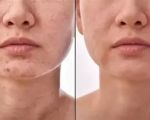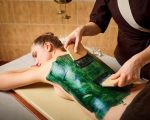- 1-Importance-of-Post-Workout-Recovery
- 2-Deep-Tissue-Massage-Benefits
- 3-Hydrotherapy-for-Muscle-Relief
- 4-Aromatherapy-and-Essential-Oils
- 5-Infrared-Sauna-Therapy
- 6-Case-Study-Athlete-Experience
- 7-Tips-for-Maximizing-Recovery
1. The Importance of Post-Workout Recovery and Spa Treatments
After an intense workout, your muscles undergo stress and micro-tears that require effective recovery to avoid injury and enhance future performance. Post-workout recovery isn’t just about rest—it involves targeted therapies that promote blood flow, reduce inflammation, and alleviate soreness.
Integrating spa treatments into your recovery routine can accelerate healing by combining relaxation with therapeutic techniques. Best spa treatments for post-workout recovery harness a blend of massage, heat therapy, and natural elements designed to soothe tired muscles and rejuvenate the body.
Many professional athletes and fitness enthusiasts now prioritize spa therapy as part of their regimen. Not only does it improve muscle recovery, but it also supports mental well-being—helping you return to training stronger and more focused.
2. Deep Tissue Massage: Targeting Muscle Tension and Enhancing Flexibility
Deep tissue massage is one of the most effective spa treatments for post-workout recovery. It focuses on reaching the deeper layers of muscle and connective tissue to release chronic tension and adhesions caused by intense physical activity.
This technique uses slow, firm strokes and targeted pressure to break down knots and improve circulation, which accelerates the removal of metabolic waste and delivers oxygen-rich blood to healing tissues. As a result, muscle stiffness decreases and flexibility improves.
Research shows that regular deep tissue massages can reduce delayed onset muscle soreness (DOMS), helping athletes recover faster and reduce the risk of injury. It also promotes relaxation by lowering cortisol levels, which supports overall recovery.
3. Hydrotherapy: Using Water to Relieve Muscle Fatigue
Hydrotherapy incorporates water-based treatments like hot tubs, cold plunge pools, and contrast baths to aid muscle recovery. The alternating use of hot and cold water helps reduce inflammation, improve blood flow, and ease muscle spasms.
Cold water immersion, for example, is widely used to decrease swelling and numb nerve endings to alleviate pain after heavy workouts. On the other hand, warm water relaxes tight muscles and encourages relaxation.
Combining hydrotherapy with gentle aquatic exercises in warm pools further enhances joint mobility without adding strain, making it ideal for active recovery. This natural approach is popular in spas focused on athletic recovery and injury rehabilitation.
4. Aromatherapy and Essential Oils: Enhancing Recovery Through Scent and Touch
Aromatherapy is a complementary spa treatment that uses essential oils to promote physical and psychological healing. Oils such as lavender, eucalyptus, and peppermint have anti-inflammatory and analgesic properties that can help reduce muscle soreness and improve circulation.
When combined with massage or baths, these essential oils enhance the therapeutic effects by calming the nervous system and reducing stress hormones. For example, peppermint oil stimulates blood flow and provides a cooling sensation, which can relieve muscle fatigue after exercise.
The holistic nature of aromatherapy makes it a favorite among spa-goers seeking both muscle recovery and relaxation benefits, reinforcing the mind-body connection vital for athletic performance.
5. Infrared Sauna Therapy: Deep Heat for Detox and Muscle Recovery
Infrared sauna therapy uses light to penetrate deep into muscles and tissues, generating heat that increases circulation and promotes detoxification through sweating. This treatment helps reduce muscle soreness, speeds up recovery, and eases joint pain.
Unlike traditional saunas, infrared saunas operate at lower temperatures, allowing for longer, more comfortable sessions. Studies suggest infrared therapy may also boost collagen production, aiding tissue repair and flexibility.
Athletes often incorporate infrared sauna sessions into their recovery plans to complement physical therapies, supporting faster healing and improved performance.
6. Case Study: How Spa Treatments Transformed an Athlete’s Recovery Routine
Sarah, a competitive triathlete, struggled with persistent muscle tightness and fatigue that hampered her training. After integrating spa treatments focused on deep tissue massage, hydrotherapy, and aromatherapy into her recovery plan, she noticed significant improvements within weeks.
Her deep tissue massages relieved long-standing knots, while hydrotherapy sessions helped reduce post-workout inflammation. Aromatherapy enhanced her relaxation, allowing for better sleep and reduced stress. The combined effect boosted her recovery time and overall performance.
Sarah’s experience highlights how personalized spa therapies can make a real difference, turning recovery into an active and enjoyable part of fitness.
7. Tips for Maximizing the Benefits of Spa Treatments After Workouts
To get the most out of post-workout spa treatments, consider these expert recommendations:
7.1 Schedule Treatments Strategically
Plan spa sessions within 24-48 hours after intense workouts to target inflammation and muscle soreness at its peak.
7.2 Communicate with Your Therapist
Discuss your workout routine and any specific pain points so therapists can tailor treatments to your needs.
7.3 Combine Treatments with Proper Nutrition and Hydration
Supporting therapies with balanced nutrition and hydration enhances muscle repair and detoxification.
7.4 Regularly Incorporate Spa Therapy into Your Fitness Routine
Consistent treatments prevent chronic muscle issues and keep you performing at your best.
For those seeking the best spa treatments for post-workout recovery, Spa offers a curated selection of therapies and products designed to help you recover faster, reduce soreness, and improve overall wellness. Whether you’re a casual gym-goer or a professional athlete, integrating spa treatments into your routine can transform how you recover and perform.








